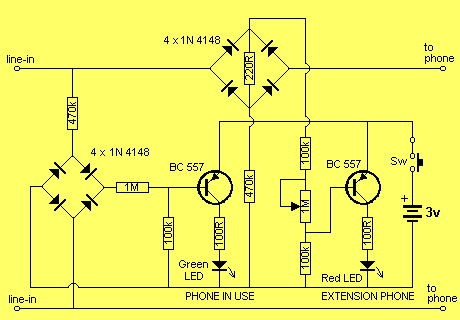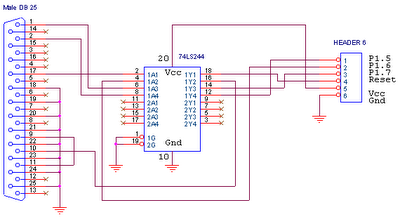
Car Park Aid Circuit

The Park Aid system utilizes three LEDs to indicate the distance of a bumper barrier through infrared operation, designed for indoor use. The circuit diagram includes the following components: R1 (10K 1/4W resistor), R2, R5, R6, R9 (1K 1/4W resistors), R3 (33R 1/4W resistor), R4, R11 (1M 1/4W resistors), R7 (4K7 1/4W resistor), and R8 (1K5 1/4W resistor).
The Park Aid system is designed to assist users in parking by providing visual feedback on the proximity of obstacles. The circuit operates using infrared (IR) technology, which is effective for indoor applications where direct line-of-sight is often available.
The three LEDs serve as indicators, illuminating in response to varying distances detected by the IR sensor. The resistors included in the circuit are essential for controlling the current flowing through the LEDs and other components, ensuring that they operate within safe limits.
Resistor R1, with a value of 10K ohms, is likely used for biasing purposes, while the 1K ohm resistors (R2, R5, R6, R9) may be used in various parts of the circuit to stabilize the voltage levels. R3, a 33 ohm resistor, may be used to limit the current in specific sections of the circuit, preventing damage to sensitive components. The 1M ohm resistors (R4, R11) can serve as pull-down or pull-up resistors, ensuring that the inputs to the circuit are at a defined state when not actively driven. R7, with a resistance of 4.7K ohms, and R8, at 1.5K ohms, also play roles in current limiting and voltage division as necessary.
In summary, this Park Aid circuit is a straightforward yet effective design that leverages infrared technology and LED indicators to provide users with a visual representation of distance to obstacles, enhancing safety and convenience during parking maneuvers.Park Aid Three LEDs signal bumper-barrier distance Infra-red operation, indoor use Circuit diagram: Parts: R1 10K 1/4W Resistor R2,R5,R6,R9 1K 1/4W Resistors R3 33R 1/4W Resistor R4,R11 1M 1/4W Resistors R7 4K7 1/4W Resistor R8 1K5 1/4W Res.. 🔗 External reference
The Park Aid system is designed to assist users in parking by providing visual feedback on the proximity of obstacles. The circuit operates using infrared (IR) technology, which is effective for indoor applications where direct line-of-sight is often available.
The three LEDs serve as indicators, illuminating in response to varying distances detected by the IR sensor. The resistors included in the circuit are essential for controlling the current flowing through the LEDs and other components, ensuring that they operate within safe limits.
Resistor R1, with a value of 10K ohms, is likely used for biasing purposes, while the 1K ohm resistors (R2, R5, R6, R9) may be used in various parts of the circuit to stabilize the voltage levels. R3, a 33 ohm resistor, may be used to limit the current in specific sections of the circuit, preventing damage to sensitive components. The 1M ohm resistors (R4, R11) can serve as pull-down or pull-up resistors, ensuring that the inputs to the circuit are at a defined state when not actively driven. R7, with a resistance of 4.7K ohms, and R8, at 1.5K ohms, also play roles in current limiting and voltage division as necessary.
In summary, this Park Aid circuit is a straightforward yet effective design that leverages infrared technology and LED indicators to provide users with a visual representation of distance to obstacles, enhancing safety and convenience during parking maneuvers.Park Aid Three LEDs signal bumper-barrier distance Infra-red operation, indoor use Circuit diagram: Parts: R1 10K 1/4W Resistor R2,R5,R6,R9 1K 1/4W Resistors R3 33R 1/4W Resistor R4,R11 1M 1/4W Resistors R7 4K7 1/4W Resistor R8 1K5 1/4W Res.. 🔗 External reference





